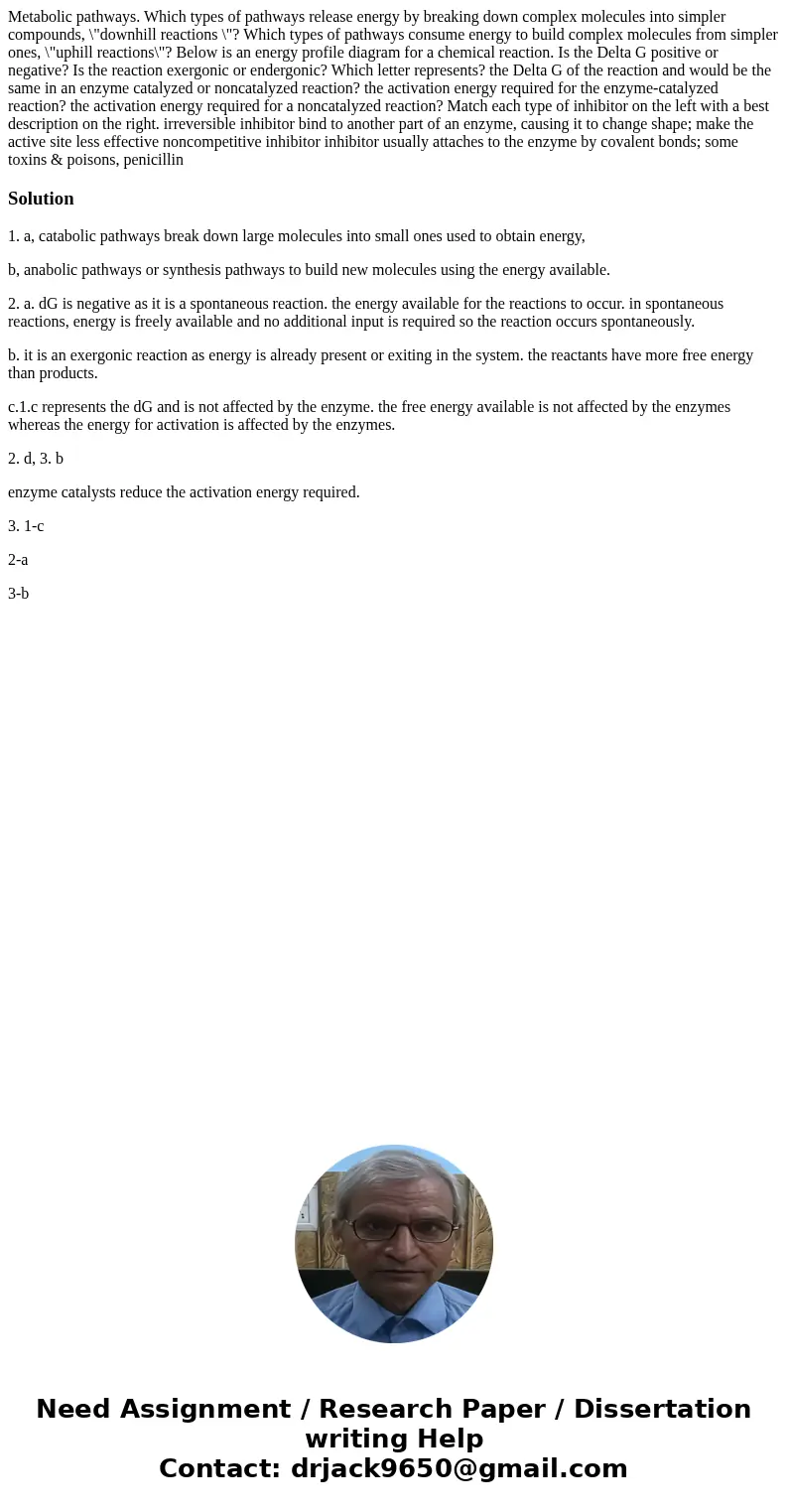Metabolic pathways. Which types of pathways release energy by breaking down complex molecules into simpler compounds, \"downhill reactions \"? Which types of pathways consume energy to build complex molecules from simpler ones, \"uphill reactions\"? Below is an energy profile diagram for a chemical reaction. Is the Delta G positive or negative? Is the reaction exergonic or endergonic? Which letter represents? the Delta G of the reaction and would be the same in an enzyme catalyzed or noncatalyzed reaction? the activation energy required for the enzyme-catalyzed reaction? the activation energy required for a noncatalyzed reaction? Match each type of inhibitor on the left with a best description on the right. irreversible inhibitor bind to another part of an enzyme, causing it to change shape; make the active site less effective noncompetitive inhibitor inhibitor usually attaches to the enzyme by covalent bonds; some toxins & poisons, penicillin
1. a, catabolic pathways break down large molecules into small ones used to obtain energy,
b, anabolic pathways or synthesis pathways to build new molecules using the energy available.
2. a. dG is negative as it is a spontaneous reaction. the energy available for the reactions to occur. in spontaneous reactions, energy is freely available and no additional input is required so the reaction occurs spontaneously.
b. it is an exergonic reaction as energy is already present or exiting in the system. the reactants have more free energy than products.
c.1.c represents the dG and is not affected by the enzyme. the free energy available is not affected by the enzymes whereas the energy for activation is affected by the enzymes.
2. d, 3. b
enzyme catalysts reduce the activation energy required.
3. 1-c
2-a
3-b

 Homework Sourse
Homework Sourse